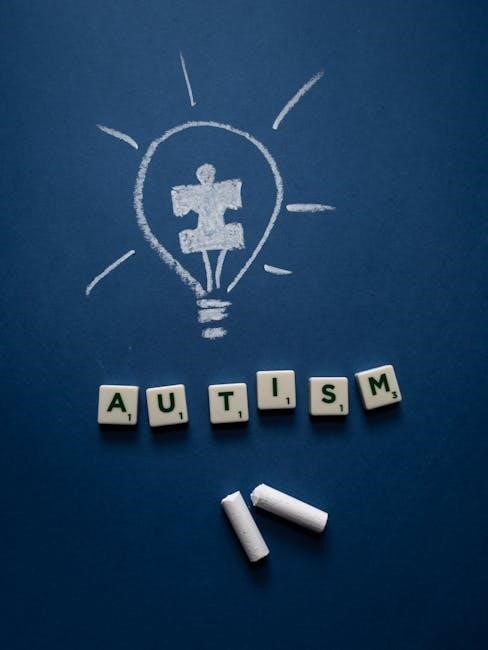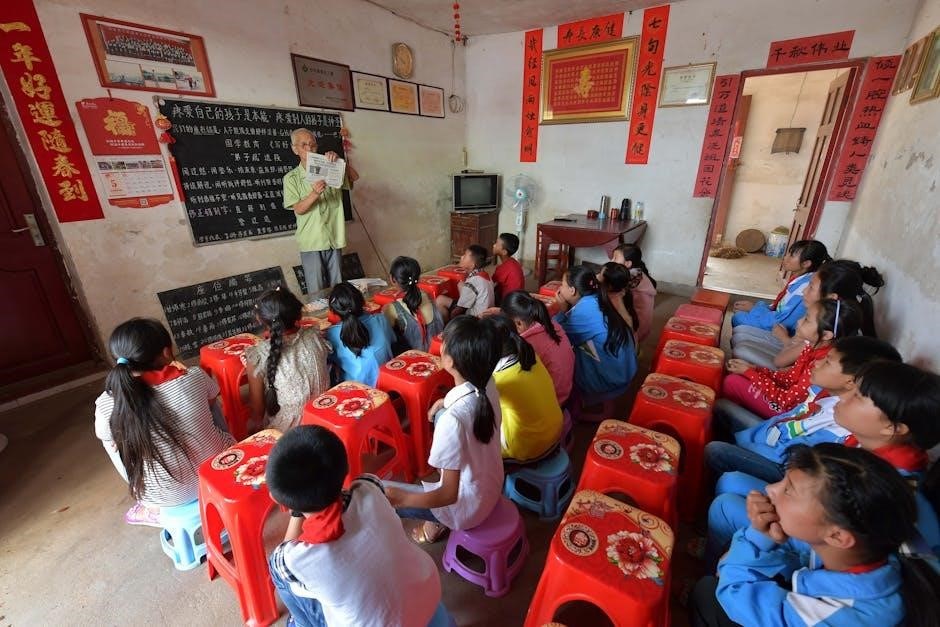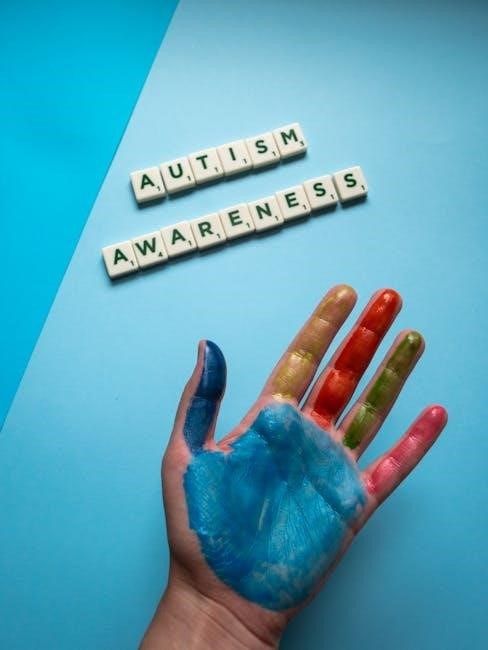Community-Based Instruction is a teaching method for special education students‚ providing hands-on learning experiences in real-world settings‚ enhancing their life skills and independence‚ through various activities and tasks.
Definition and Importance of Community-Based Instruction
Community-Based Instruction refers to a teaching approach that focuses on providing special education students with learning experiences in natural‚ community-based settings. This instructional method is designed to help students develop functional skills‚ increase independence‚ and enhance their quality of life. The importance of Community-Based Instruction lies in its ability to provide students with hands-on learning experiences that are relevant to their everyday lives. By participating in community-based activities‚ students can apply theoretical concepts to real-world situations‚ developing a deeper understanding of the material. Additionally‚ Community-Based Instruction allows students to interact with their community‚ fostering social skills‚ and promoting inclusion. Overall‚ Community-Based Instruction is a vital component of special education‚ as it helps students develop the skills and knowledge necessary to succeed in their future endeavors‚ and become active participants in their communities‚ with a sense of purpose and belonging.

Benefits of Community-Based Instruction
Community-Based Instruction offers numerous benefits‚ including improved social skills‚ increased independence‚ and enhanced learning experiences‚ for special education students‚ in real-world settings‚ naturally.
Enhancing Learning and Engagement
Community-Based Instruction enhances learning and engagement for special education students by providing hands-on experiences in real-world settings‚ making learning more meaningful and relevant to their lives.
This approach helps students develop practical skills‚ such as problem-solving‚ communication‚ and teamwork‚ which are essential for success in their future careers and personal lives.
By participating in community-based activities‚ students become more motivated and enthusiastic about learning‚ leading to increased academic achievement and improved outcomes.
The community-based instruction approach also allows teachers to tailor instruction to meet the individual needs and interests of their students‚ promoting a more personalized and effective learning experience.
Overall‚ community-based instruction is a powerful tool for enhancing learning and engagement‚ and for helping special education students reach their full potential and become active and contributing members of their communities.
This approach is highly effective in special education settings.

Planning and Preparation for Community-Based Instruction
Teachers design community-based instruction by reviewing student IEPs and surveying parent concerns to create effective plans and activities for special education students every day.
Research-Based Instructional Strategies
Research-based instructional strategies are essential for community-based instruction in special education‚ as they provide a framework for teachers to design and implement effective lessons. These strategies are grounded in evidence-based practices and are tailored to meet the diverse needs of students with disabilities. By using research-based instructional strategies‚ teachers can create a supportive and inclusive learning environment that promotes academic achievement and social growth. The use of data-driven instruction and evidence-based decisions also enables teachers to assess student progress and make informed decisions about instruction. Additionally‚ research-based instructional strategies can be used to develop individualized education programs (IEPs) that are tailored to each student’s unique needs and goals‚ ensuring that community-based instruction is both effective and meaningful. This approach helps to ensure that students receive a high-quality education that prepares them for success in their future endeavors.

Implementing Community-Based Instruction
Teachers implement community-based instruction through planned trips and activities‚ targeting specific skills and objectives‚ in real-world settings‚ with smaller student groups‚ and clear goals and outcomes always.
Phase 2: Community-Based Instruction Trips
Community-Based Instruction trips are a crucial component of special education‚ providing students with hands-on learning experiences in real-world settings. These trips are carefully planned to align with individualized education programs and transition plans. The goal of these trips is to support students in developing essential life skills‚ such as independence‚ self-advocacy‚ and social interaction. By participating in community-based instruction trips‚ students can apply theoretical knowledge to practical situations‚ enhancing their understanding and retention of skills. Teachers play a vital role in facilitating these trips‚ ensuring that students receive personalized support and guidance. Effective community-based instruction trips require collaboration between educators‚ families‚ and community partners to create a comprehensive and inclusive learning environment. This approach enables students to develop the skills and confidence necessary to succeed in post-secondary education‚ employment‚ and independent living; Community-Based Instruction trips are an essential part of special education.

Best Practices for Community-Based Instruction
Effective community-based instruction requires collaboration‚ planning‚ and ongoing support from educators‚ families‚ and community partners to ensure successful outcomes for special education students always.
Community Support and Prioritization
Community support is essential for the success of community-based instruction in special education‚ as it provides students with opportunities to interact with community members and develop social skills.
Community-based instruction relies on the involvement of local businesses‚ organizations‚ and individuals to provide students with hands-on learning experiences.
By prioritizing community support‚ educators can create a network of resources and partnerships that benefit students and enhance their learning outcomes.
Effective community support and prioritization require ongoing communication and collaboration between educators‚ community partners‚ and families to ensure that student needs are met and goals are achieved.
This collaborative approach enables community-based instruction to be tailored to the unique needs of each student‚ promoting personalized learning and community engagement.
Community-Based Instruction is a valuable special education approach‚ providing students with practical life skills and experiences‚ preparing them for independence and future success always matters greatly.
Comprehensive Guide for Teachers
A comprehensive guide for teachers on community-based instruction is essential for special education‚ providing educators with the necessary tools and strategies to support students with disabilities. The guide should include information on how to design and implement community-based instruction‚ as well as how to assess student progress and adjust instruction accordingly. Additionally‚ the guide should provide resources and support for teachers to help them navigate the complexities of community-based instruction. By providing teachers with a comprehensive guide‚ schools can ensure that students with disabilities receive the support and instruction they need to succeed in the community. Effective community-based instruction requires careful planning‚ collaboration‚ and communication among teachers‚ families‚ and community members. With the right guidance and support‚ teachers can provide high-quality community-based instruction that prepares students for success in all areas of life‚ including education and employment.
